What Animals Live In Asia?
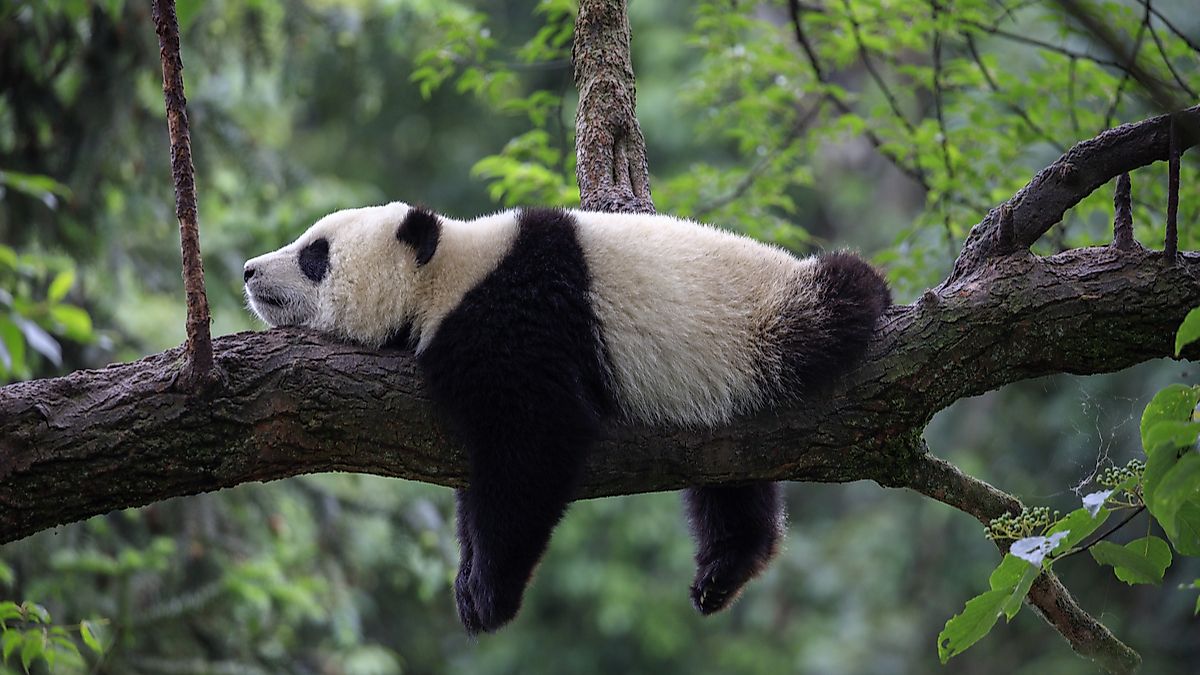
- Unlike other rhino species, the Indian Rhinoceros has a single horn.
- Japanese Macaques live in troops with an established hierarchy, and whereas the males will travel among troops, the females stay in the same one for life.
- The Bengal tiger leads a solitary life, but at times they move as 3 to 4 tigers, and cubs will stay with its mother for two to three years before leaving to find their own territory.
Asia has some of the most diverse and unique wildlife species native to any of the world's continents. But while some of these species have populations that are thriving, others are endangered, facing various threats that that risk wiping them off the face of the Earth.
1. Malayan Tapir
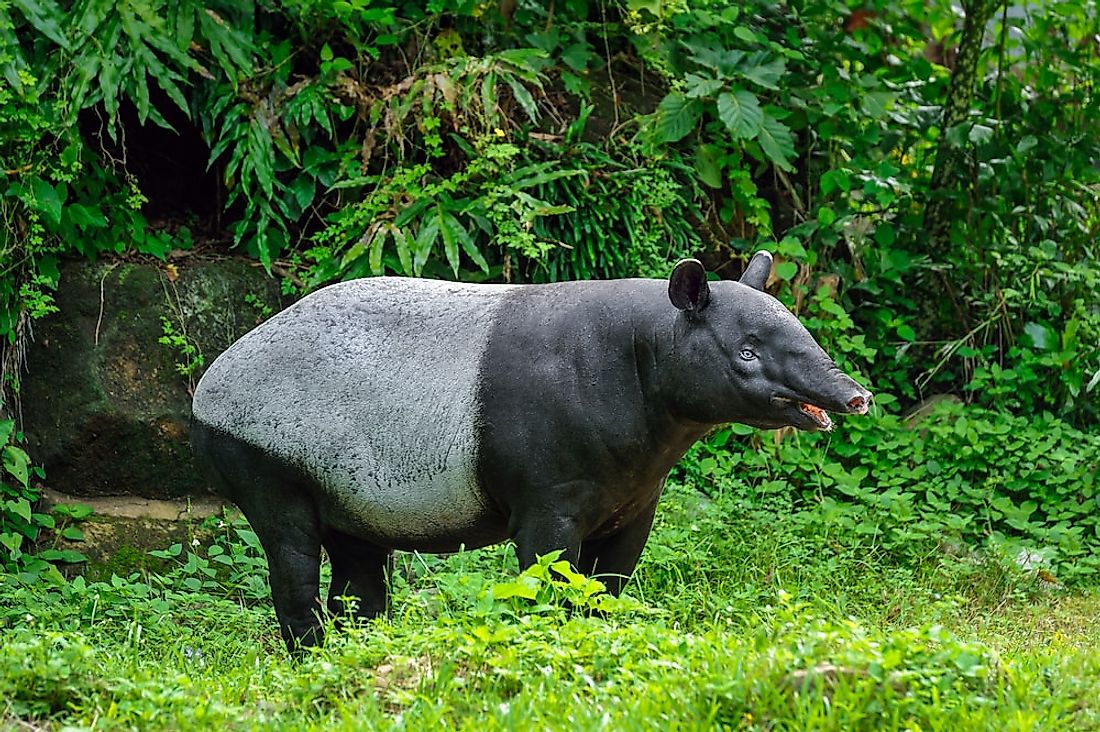
The Malayan Tapir is an endangered mammal in the tapir family, native to southern Thailand, southern Myanmar, the Malayan Peninsula, and the southern and central parts of Sumatra in Indonesia. It looks a bit like a cross between a pig or an anteater with its distinctive snout whose upper lip curves and hangs over the lower lip. Usually at least 6 feet long and weighing up to roughly 720 pounds, it’s the largest of the four Tapir species.
The Malayan Tapir is a solitary animal except when reproducing, and tapirs are generally aggressive towards humans and other animals, although they are herbivores. It also whistles, clicks and makes hiccup-like calls to communicate. Rainforests, lower montane forests, scrublands and grasslands are the ideal habitats for the Malayan Tapir. There are about 2,000 of this species remaining, and their population is decreasing. This is due to habitat loss from illegal logging, and hunting.
2. Indian Rhinoceros
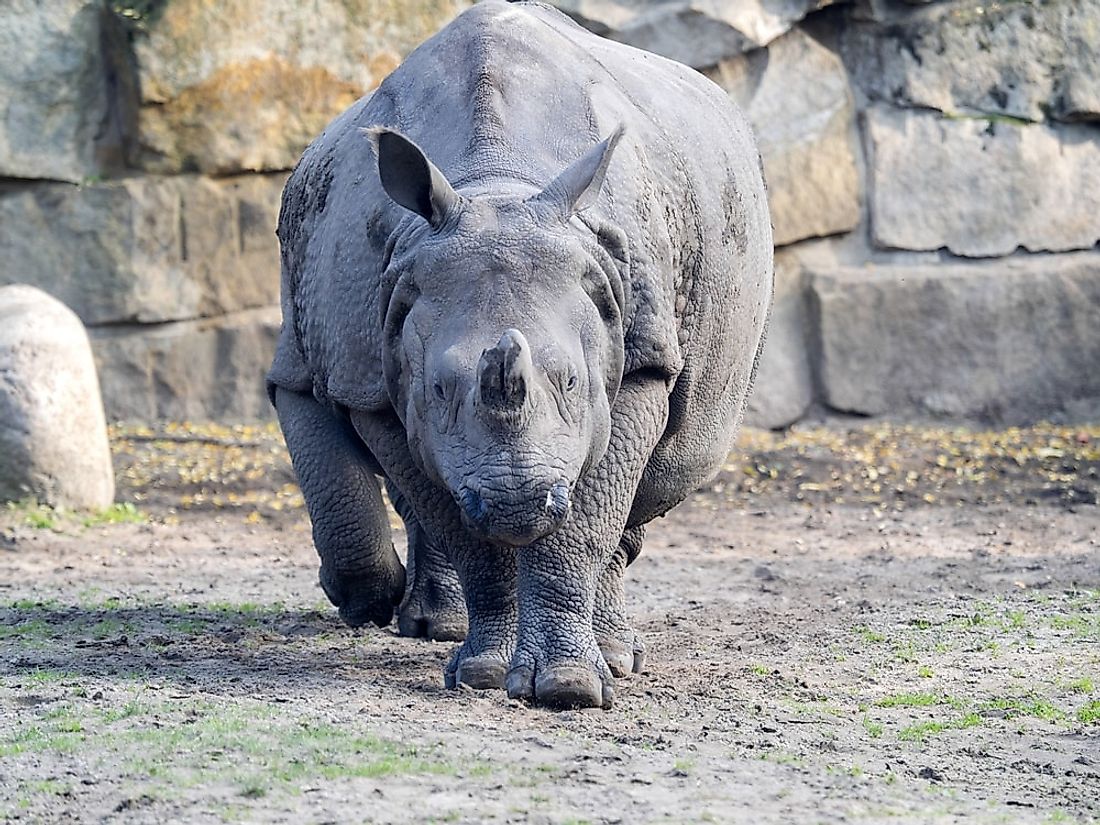
Unlike other rhino species, the Indian Rhinoceros has a single horn. This herbivorous grazer has a distinctive grey-brown hide with folds on the neck, shoulder, and rump. The folds make the Indian Rhinoceros appear to be wearing armored plates—and in a way, it is, as the supple skin of the folds allows the rhinoceros to move, while the rest of its skin is thick for protection. The male’s head and body length is 12 to 12.5 feet with a shoulder height of about 6 feet, while a female is 10 to 11 feet long and 4 to 5.5 feet tall to the shoulder. They are definitely heavy-set creatures: a mature male weighs 2,200 kg, roughly 2.5 tons, and a female weighs 1,600, so close to 2 tons. That is about the weight of an SUV!
India and Nepal are countries where the Indian rhinoceros is found, but in the past there have been populations in Bhutan, Pakistan, and Bangladesh. These countries have tropical and subtropical grasslands, savannas, shrublands, forest, and swamps, all ideal habitats for the Indian rhinoceros. The International Union for Conservation of Nature (IUCN) classifies the Indian Rhinoceros as a vulnerable species, but luckily its population is increasing. It faces threats from sport hunting, human-rhino conflicts, and habitat encroachment for agriculture and development. The Indian rhinoceros is a solitary animal except when mating, and males are territorial, marking their territories with dung piles. To communicate, the Indian Rhinoceros snorts, roars and honks. It has a lifespan of 40 years.
3. Slow Loris
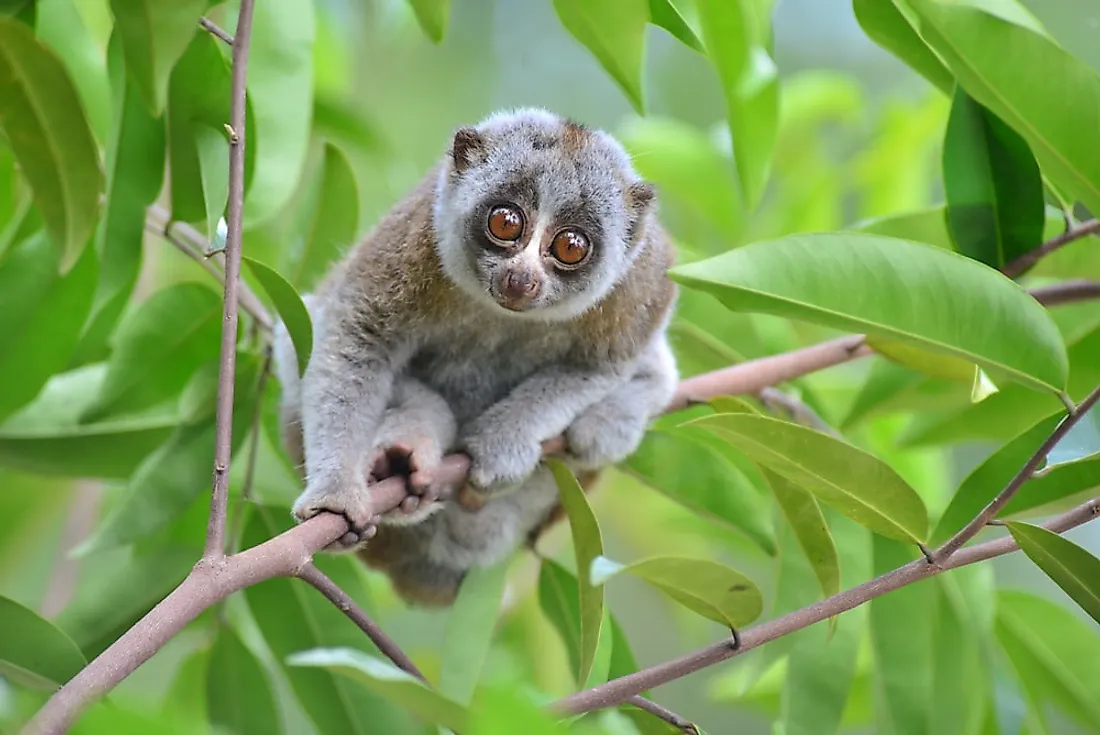
The slow loris is an omnivore forager, and one of three loris species. It is found in southern Asia, China, western Indonesia, parts of India, Myanmar, Thailand, Vietnam, Laos, and Cambodia. These countries have tropical rainforests, bamboo groves and mangrove forests suited for it. The slow loris lives in hollowed out trees, tree crevices, and branches. Its eyes are round and owl-like, and the head is round with tiny ears obscured by fur. Its unthreatening appearance is deceiving: this is the only known venomous primate. It secretes venom from a gland in its underarm it can quickly suck into its mouth before biting, which has even caused death to humans in the past.
The Slow Loris' fore and rear limbs are similar in size, it only weighs about 2 pounds. Its omnivorous diet comprises of fruits, insects, and bird and reptile eggs. The slow loris is nocturnal, and researchers believe it leads a solitary lifestyle, only coming together to mate. They communicate with each other by urine marks, after urinating on their hands and wiping them on branches to mark their territory. It is a critically endangered species according to the IUCN, facing threats from illegal pet trade, deforestation leading to habitat loss, and making traditional medicines.
4. Asian Elephant
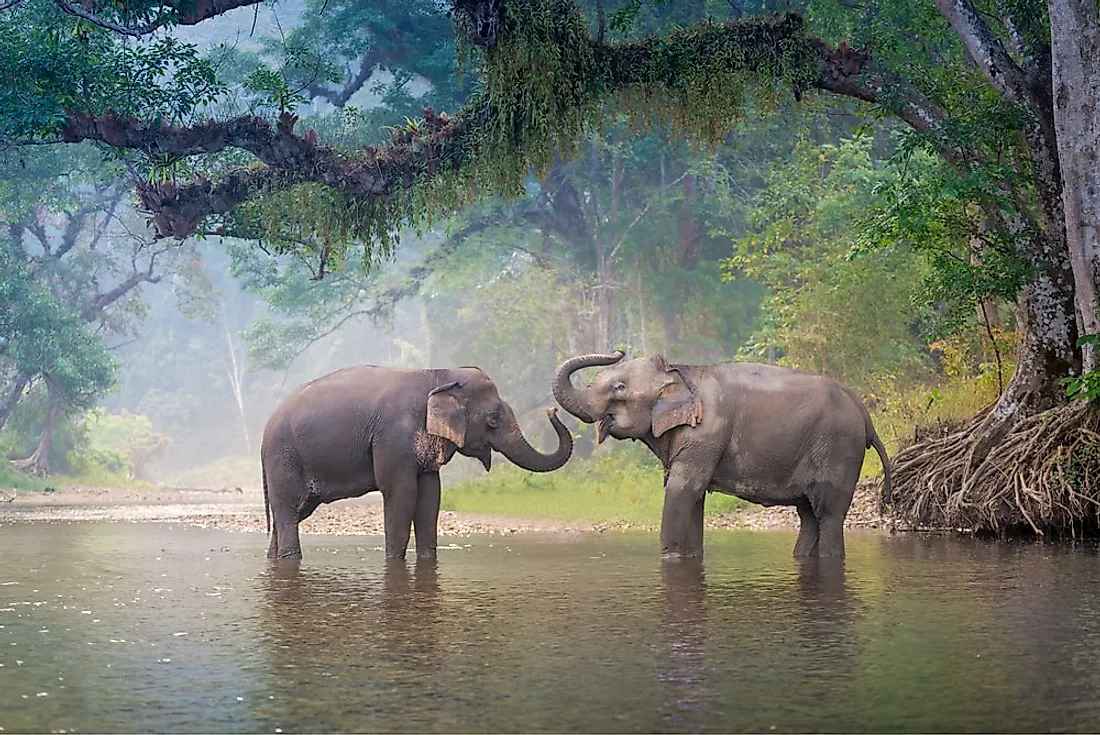
The Asian elephant is the largest of the continent’s terrestrial mammals, but smaller than its African sibling. The Indian, Sumatran, and Sri Lankan are the 3 subspecies of Asian Elephants. It can weigh up to 11,000 pounds, reach a length of 21 feet (6.4 meters), and stand 11.5 feet (3.5 meters) tall. Its skin is dark grey to brown, with pink patches on the forehead, ears, chest and the base of the trunk. The Asian elephant has one finger on the upper lip of the trunk, unlike the African species with a second one on the lower lip. This gentle giant's populations are spread in the Eastern Himalayas and Greater Mekong regions in countries like India, Sri Lanka, Bhutan, Nepal, Myanmar, Cambodia, Laos, Thailand, and Vietnam. These countries have tropical and subtropical, moist and dry broad-leaf forests suited to sustain the Asian elephant.
Female Asian elephants are more social than males, and form herds led by the oldest female. The males live alone, but on occasion group up with other males. Grass is the primary diet of an Asian elephant but also feeds on tree barks, roots, leaves, small stems and farmed crops. In a day, they eat up to 300 pounds of food, and they must drink water daily so they are always near a water source. The average lifespan of the Asian elephant is up to 60 years. The IUCN classifies the Asian elephant an endangered species with a decreasing population facing threats from habitat loss and fragmentation, due to rapid infrastructure development. There are only about 40,000 to 50,000 Asian elephants left.
5. Giant Panda
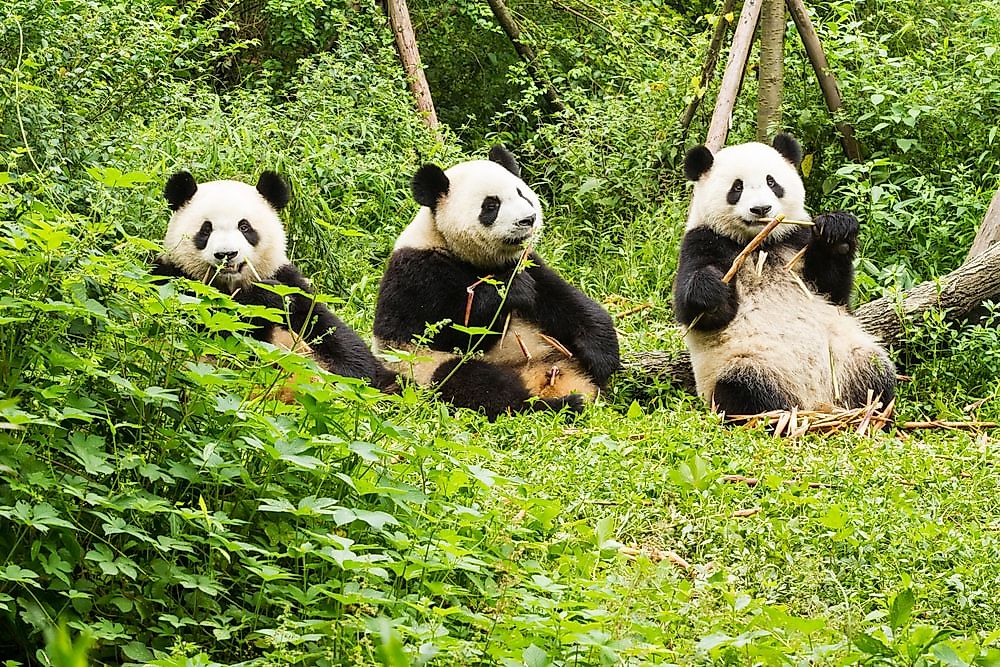
The Giant Panda is an omnivore native to south-central China and a member of the bear family of animals. It lives in a habitat of temperate broad-leaf forest or mixed forest, where it forages for bamboo. The giant panda’s thick and woolly fur coat is black and white, and when fully mature it weighs up to 330 pounds. From the nose to rump its length is 5 feet (1.5 meters) on average and has a small 5 inch (15 cm) tail.
Bamboo leaves, stems, and shoots are the primary diet of the giant panda, but it also feeds on meat from birds and small rodents. In a day it eats at least 28 pounds of bamboo in order to satisfy its diet. The giant panda leads a solitary lifestyle, avoiding confrontations except when cubs are threatened. Still, it marks its territorial routes by spraying urine, clawing trees, and rubbing against objects, and can spend 12 hours daily eating. The IUCN classifies the giant panda as a vulnerable species, previously classifying it as endangered, whose habitat over the years has been encroached on due to agriculture and logging. There are about 1864 giant pandas left in the wild, and luckily, its numbers are increasing. In captivity, pandas can live up to 30 years old.
6. Indian Cobra
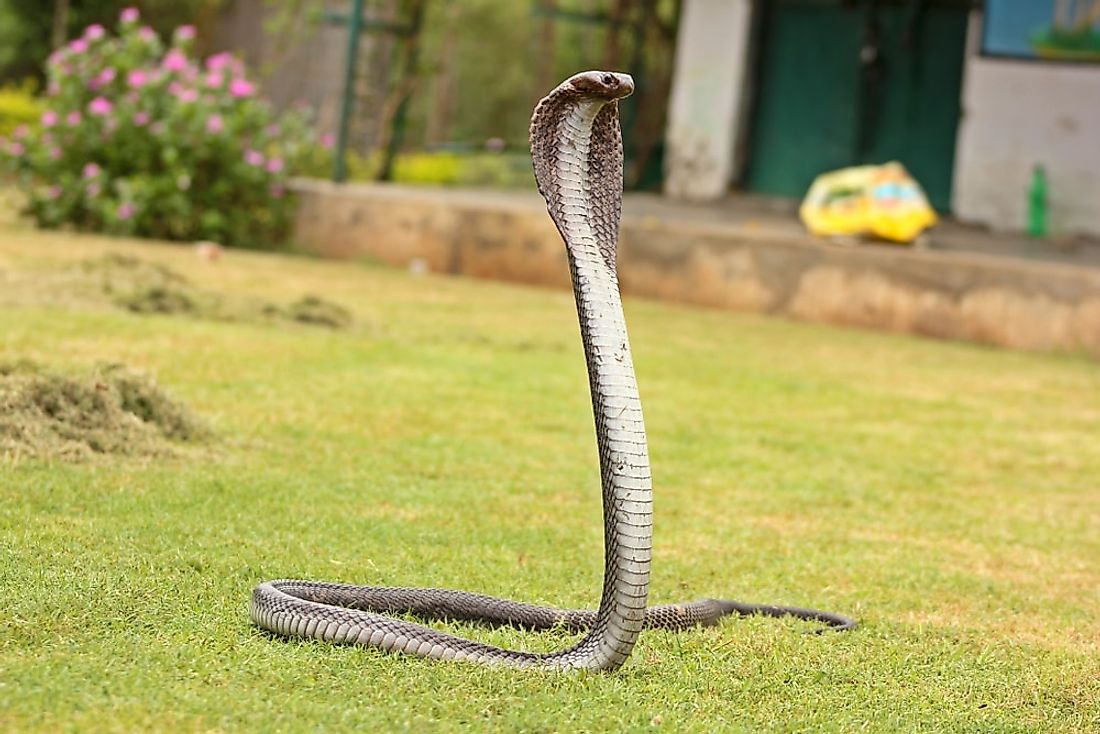
The Indian Cobra is a venomous snake native to the Middle East, India, China, Bangladesh, and Indonesia in their tropical environments. At full maturity, this reptile can grow to be 6 to over 7 feet (1.8 to 2.22 meters) long. Its body color ranges from cream-white, brown, to black, and others have half-ring patterns on the back of the neck. The Indian cobra lives anywhere it finds shelter, even in human settlements.
In India, its bites kill 10,000 people annually on average and many of those who are bitten work on rice paddies. In such environments, the Indian cobra eats mice, rats, lizards, birds and their eggs, frogs and other snakes. It is most active during the evening and early mornings. When threatened it hisses, sways its hood to seem larger and appear aggressive, and bites or spits venom. The Indian cobra reproduces sexually, and the female fiercely guards the eggs in hollow trees or in the earth, until they hatch, in about 50 to 60 days. In captivity, it can live for up to 30 years. The Indian Cobra is not an endangered species, but it is protected in India.
7. Lesser Bird-of-Paradise
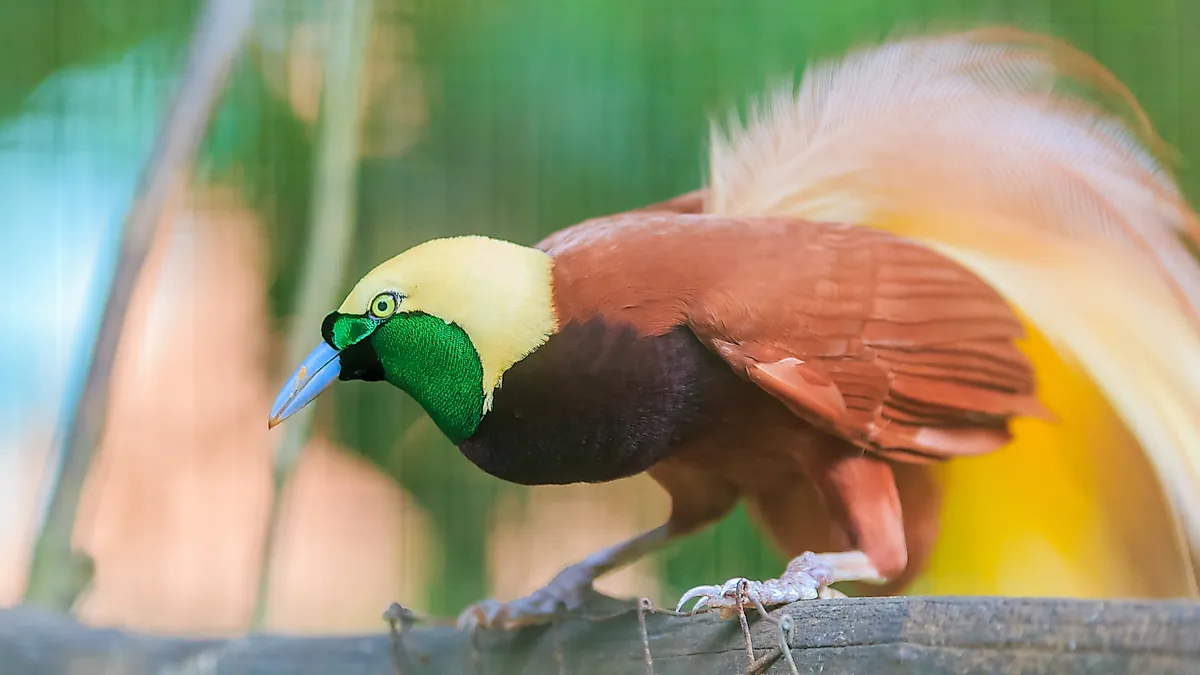
The Lesser Bird-of-Paradise is found in pacific countries like Papua New Guinea, eastern Australia, and Southeast Asia, mainly Indonesia. In these regions, lowland and tropical rainforests, and swamp forests are its habitats. This bird is one of about 40 Bird-of-Paradise species. The lesser bird-of-paradise is 12.5 inches (32 cm) long, tail wires not included. The male weighs between 6.5 to 10.5 oz (183-300 g), and females 5 to 7.5 oz (141-210 g). The lesser bird of paradise plumage is very bright and colourful, with black, white, grey, green, brown, blue, yellow, and red all appearing depending on sex and age.
Being polygynous, a male lesser bird-of-paradise mates with several females while perched on trees, and the most dominant male get the most copulation, while the females only mate with one male in a season. Its omnivorous diet consists of fruits, arthropods, insects, and snails. This bird is not threatened, hence classified as of least concern by the IUCN. As collective Birds of Paradise. In the zoo, they can live up to 30 years.
8. Japanese Macaque
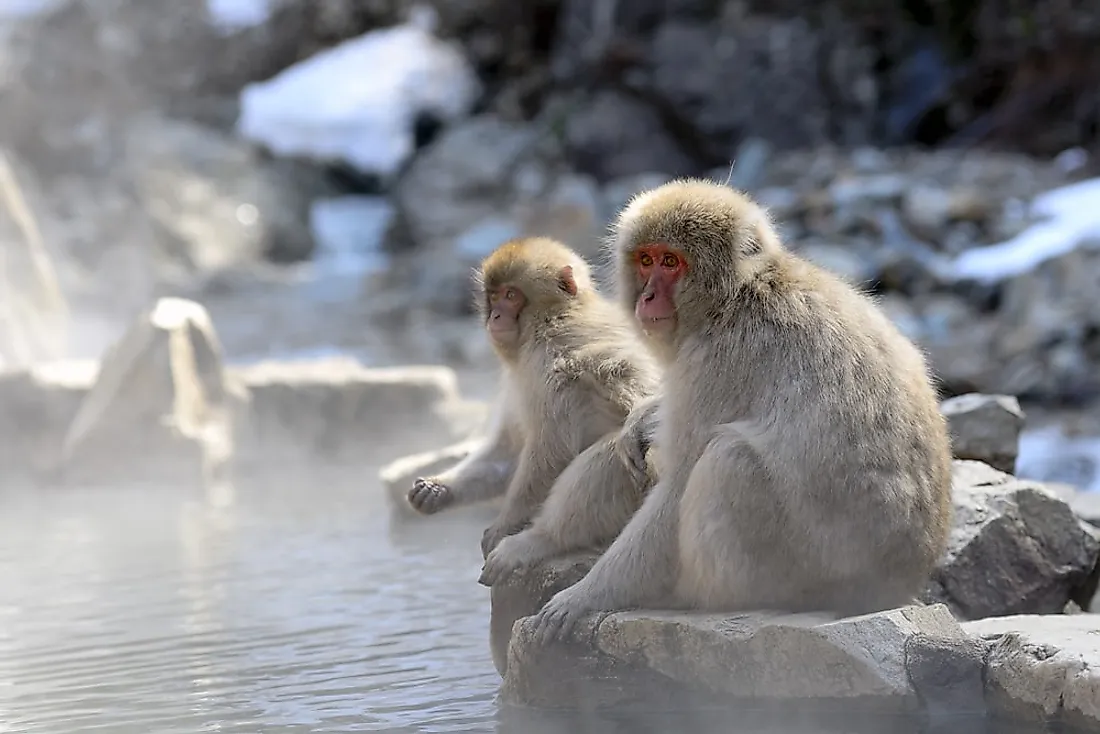
Also called the snow monkey, the Japanese Macaque is native to Japan on the Honshu, Shikoku and Kyushu islands, and the smaller Yakushima Island. Its head and body length is about 20-22 inches (52-57 cm) and they have a small tail is 2.5 4 inches (7-12 cm). The male Japanese Macaque is sometimes almost twice the size of the female, weighing an average 25 pounds compared to the females at 18 pounds. Its fur is dense and brown to grey in color. The face and rump of a mature Japanese macaque is red, and the face also has whiskers and beard. The diet of a Japanese Macaque depends on seasons. It can feed on leaves, berries, seeds, small animals, insects, tree bark, buds, crabs, bird’s eggs, and fungi, making it omnivorous.
The Japanese Macaque habitat is broad-leaf, deciduous, and evergreen forests. It is also a social animal and lives in troops with about 20-40 monkeys or at times even 100. Male Japanese Macaques can move within troops, but the females don’t, and there is an established social hierarchy with daughters taking the places of their mother, so it is a matrilineal society. Access to food in these troops is determined by this hierarchy, but these monkeys demonstrate impressive levels of kindness and cohabitation. The IUCN classifies the Japanese Macaque as of least concern, and not globally threatened. In the wild, it lives on average 6 years, but in a zoo it can live for up to 30 years.
9. Bactrian Camel
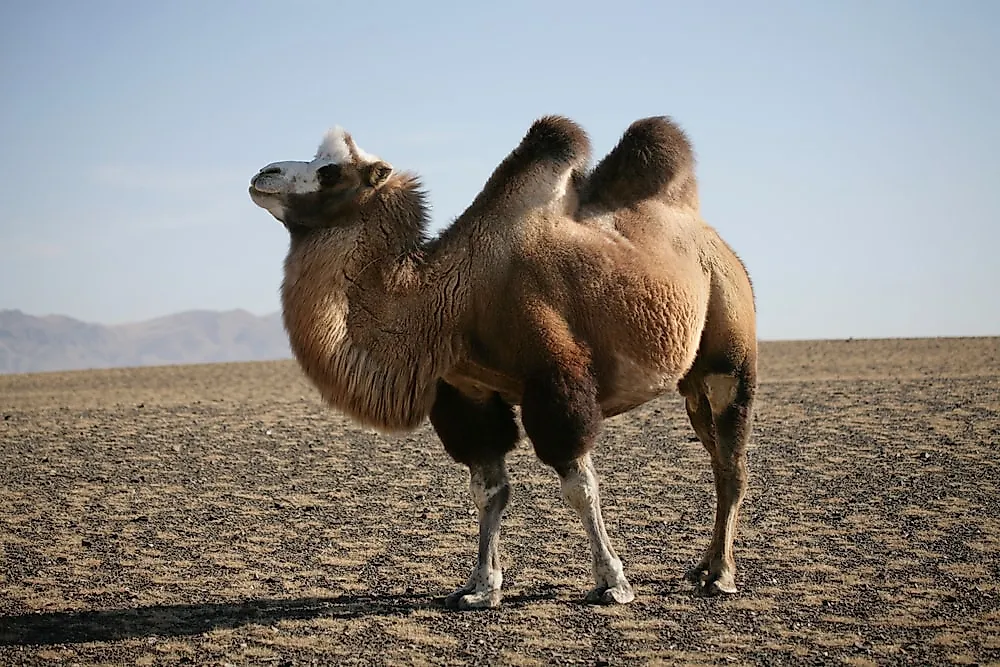
The wild Bactrian camel with two humps is native to the deserts of southern Mongolia, northwestern China, and Kazakhstan. Bactrian camels migrate and exist in habitats like the rocky mountain massifs, flat arid deserts, stony plains, and sand dunes in those countries. This camel weighs 1,800 pounds, is 3 meters long, and is over 7 feet tall (2 meters) to the hump. The Bactrian camel’s fur is light grey-brown and beige in color. The thick fur is unkempt during winter and gets rapidly shed in spring.
Shrubs and grass are the primary diet of the Bactrian camel, but they can also feed on thorny, dry, and salty plants. In one intake, the Bactrian camel can drink 20 gallons (75 litres) of water—up to 30 gallons if they are extremely thirsty. It’s also adapted to drink salty or brackish water without being harmed because human settlements have forced this animal to move to areas where only salty water is available. Bactrian camels are social and live in flocks of 5 to 30 animals, led by a dominant male in grazing areas. This camel species is classified as critically endangered by the IUCN and with a decreasing population, facing threats from poaching for meat and hides, sport hunting, habitat destruction by toxic illegal mining, and loss of water sources due to drought.
10. Bengal Tiger
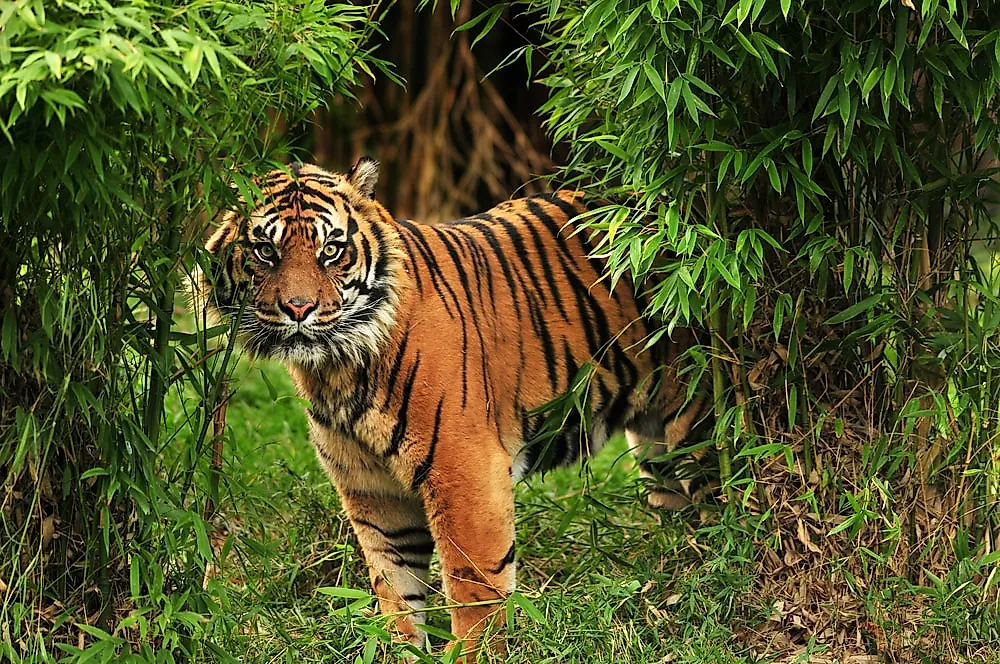
India is where large populations of the Bengal tiger are found, others are in Bangladesh, Nepal, Bhutan, China, and Myanmar. These countries have dry and wet deciduous forests, grassland and temperate forests, and mangrove forests, all ideal habitats for this tiger. An adult male Bengal tiger weighs up to 500 pounds and a female about 310 pounds. Its fur is usually orange with thinner black stripes, but there is also the rare white Bengal tiger, with thin brown or black stripes, or the golden tabby Bengal tiger with a whitish-yellow color and amber stripes on the side, even more rare and caused by a recessive gene.
Deer, antelope, hogs, buffalos, monkeys, birds, and livestock are among the Bengal tiger's prey. This tiger is nocturnal and hunts at night, and can swim and climb trees. The Bengal tiger leads a solitary life, but at times they move as 3 to 4 tigers, and cubs will stay with its mother for two to three years before leaving to find their own territory. It’s also an endangered species with only around 2,500 of them left due to habitat loss and fragmentation caused by human development and poaching. In the wild it can live for 10 to 15 years, but in captivity up to 20 years, according to the Indian Tiger Welfare Society.











